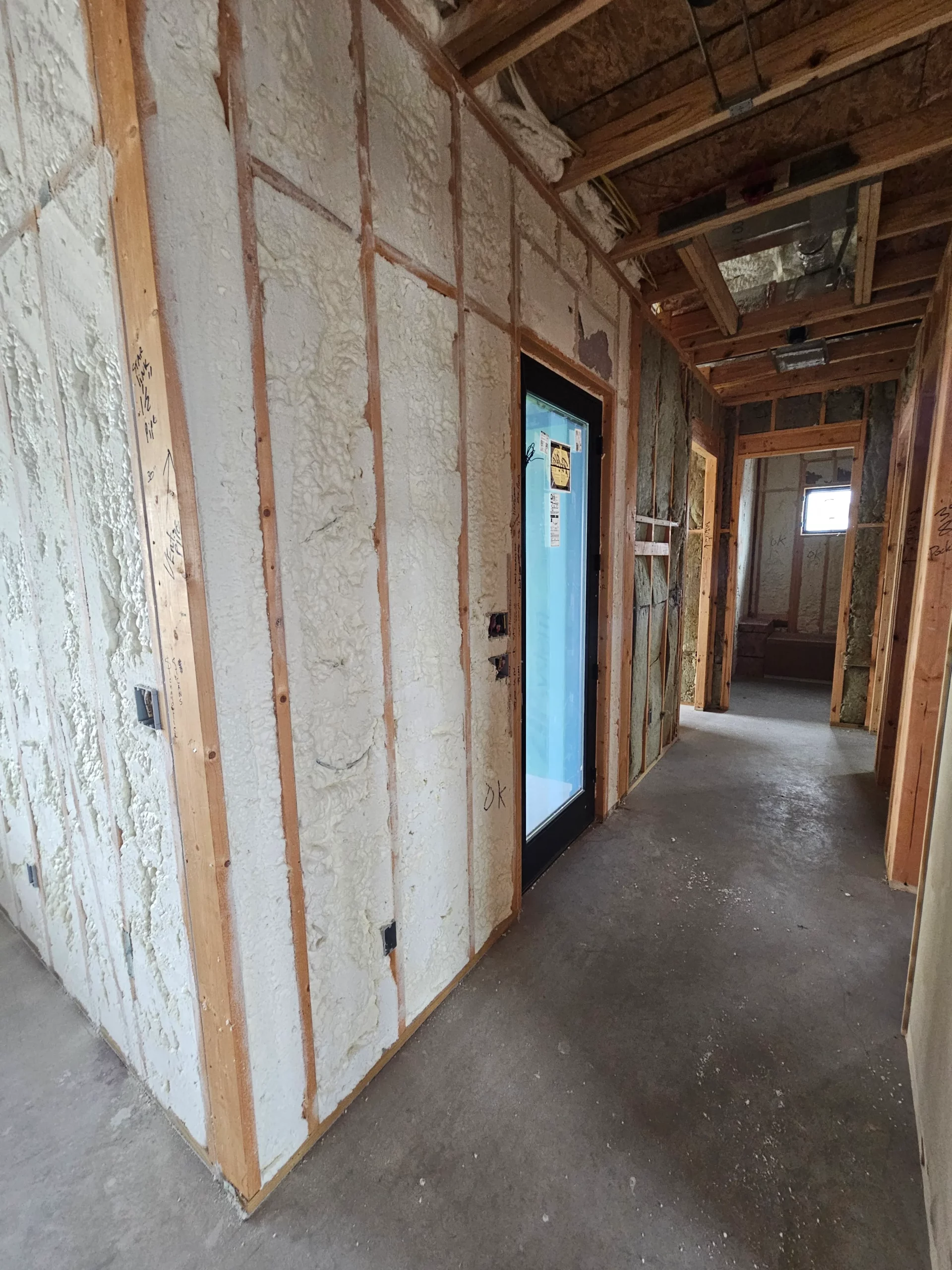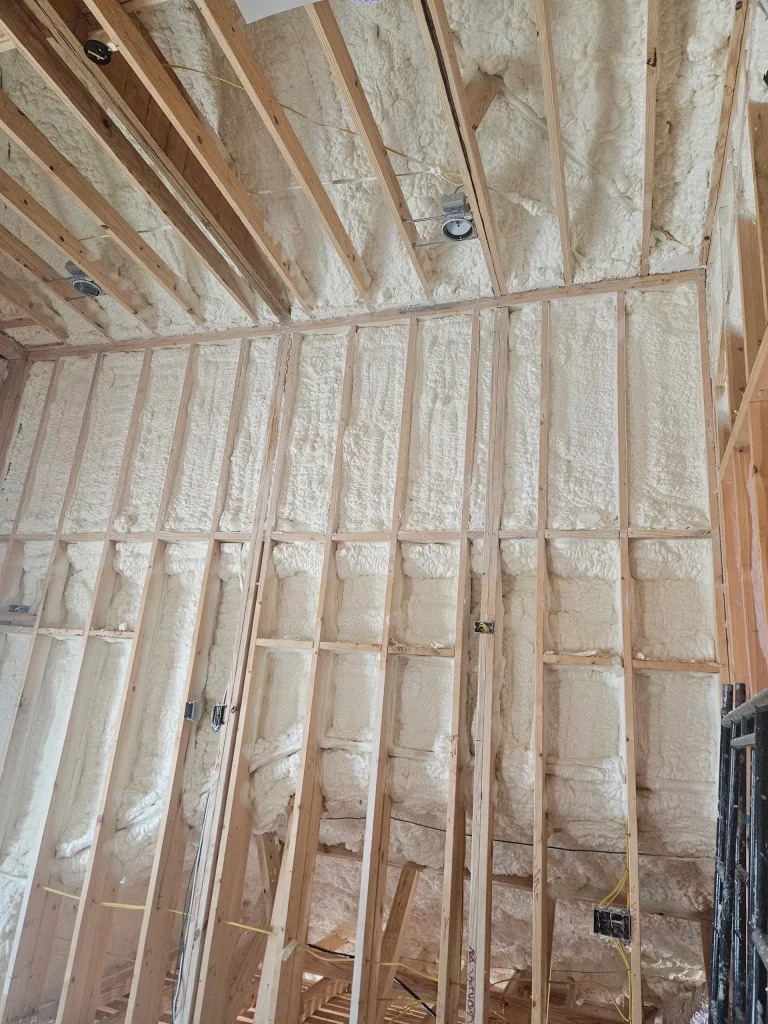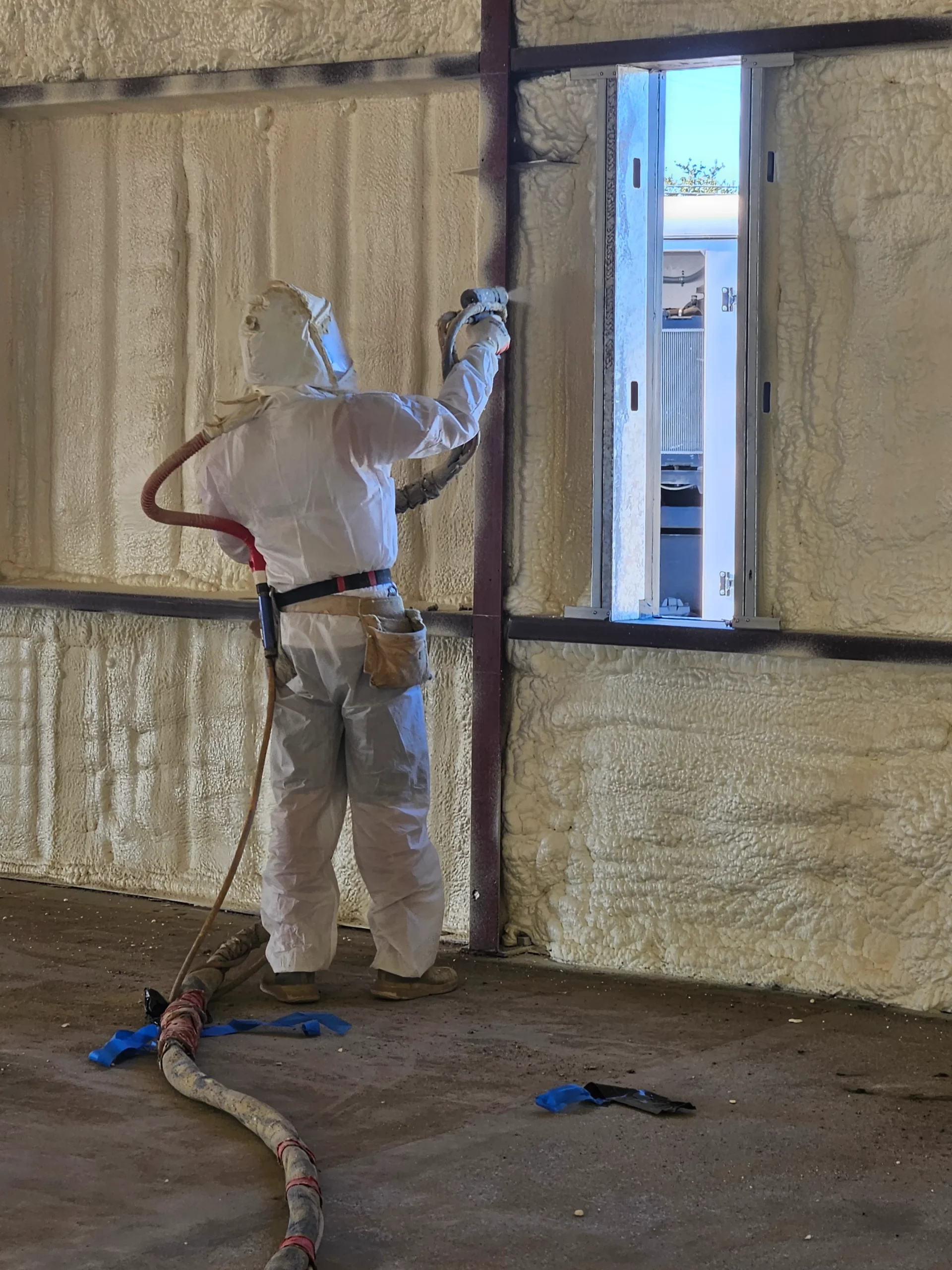

Yes, certain types of insulation in Taylor, TX can dramatically reduce the number of outdoor allergens entering your home. The key is choosing an insulation that also functions as an air barrier. Materials like spray foam create a seal that physically blocks the tiny gaps and cracks in a building’s structure, which are the primary pathways for pollen, dust, and mold spores to infiltrate from the outside.
Traditional insulation, such as fiberglass batts or cellulose, primarily works by slowing heat transfer; it doesn’t stop air movement. Because of this, airborne allergens can still pass through the building envelope. This article breaks down how insulation impacts indoor air quality, which types are most effective against allergens, and other factors Taylor homeowners should consider for a healthier living environment. With years of experience helping Central Texas residents improve their homes, Spray Foam Tech provides this guide to clarify the connection between insulation and allergy relief.
Most homes, even newer ones, are not perfectly airtight. Air moves in and out through countless small openings in walls, attics, and crawl spaces. This uncontrolled air exchange, known as air infiltration, is how a significant portion of outdoor allergens get inside. In Central Texas, common culprits include cedar pollen, ragweed, and various mold spores that thrive in the humid climate.
The U.S. Environmental Protection Agency reports that indoor levels of some pollutants can be two to five times higher than outdoor levels. While many factors contribute to this, air leakage is a major pathway for outdoor contaminants to accumulate indoors. Wind pressure against the house and temperature differences between the inside and outside (the stack effect) constantly push and pull air through these openings, carrying allergens along with it.
Not all insulation materials perform the same when it comes to blocking airborne particles. The main difference lies in their ability to stop airflow.
Fiberglass batts and blown-in cellulose are fibrous materials that trap air in small pockets to slow down heat transfer. They do not, however, form an air barrier. Air can still move through and around them, carrying fine particles like pollen. While these materials are effective for thermal resistance, they offer minimal defense against allergen infiltration.
Bonus Tip: If fiberglass or cellulose insulation becomes damp from a roof leak or high humidity, it can become a breeding ground for mold and mildew, which will then release spores directly into your home’s air.
Spray polyurethane foam (SPF) works differently. It’s applied as a liquid that expands to fill every crack, crevice, and gap, creating a solid, continuous, and airtight barrier. This monolithic seal is what makes it so effective at keeping outdoor allergens out. By eliminating the pathways for air infiltration, you stop allergens at the source. Information from the U.S. Department of Energy confirms that air sealing is a critical step for improving indoor air quality and energy efficiency.
The following table compares how these materials handle air and allergen movement.
Fiberglass Batts
Blown-In Cellulose
Open-Cell Spray Foam
Closed-Cell Spray Foam
While air-sealing insulation is a powerful tool, achieving the best possible indoor air quality requires a comprehensive strategy. Insulation is the foundation, but these other elements are also important:
Bonus Tip: Schedule regular maintenance for your HVAC system. Dirty coils and ducts can become a source of allergens, circulating them throughout your home.
Before you invest in new insulation, think about these factors to ensure you’re making the right choice for your specific situation.
It’s hard to fix a problem you can’t see. A professional energy audit, which often includes a blower door test, can precisely measure how much your house leaks and identify the biggest problem areas. This gives you a clear picture of where allergens are most likely getting in.
Are your allergies seasonal, like cedar fever, or are they a year-round issue related to dust and mold? Knowing your specific triggers helps prioritize solutions. If humidity-driven mold is a major concern in your home, choosing a moisture-resistant insulation like closed-cell spray foam becomes even more important.
Central Texas falls into a hot-humid climate zone. A study published by Building Science Corporation explains that managing moisture is just as important as managing temperature in these areas. Insulation that also acts as a vapor barrier, like closed-cell spray foam, can prevent moisture from accumulating within your walls, which helps stop mold growth.

Yes, absolutely. A significant amount of air leakage occurs through the attic. Air sealing and properly insulating the attic floor or the roofline can stop pollen and dust from entering the main living space from above.
Certain types can. Fiberglass and cellulose can absorb moisture and support mold growth if they get wet. Closed-cell spray foam is waterproof and does not provide a food source for mold, making it a much better choice in humid climates.
Once fully cured, typically within 24 hours, high-quality spray foam is inert and stable. Most people with chemical sensitivities have no issues with modern, professionally installed spray foam. It is best to discuss any specific health concerns with the installer beforehand.
R-value measures thermal resistance only. It has no direct relationship to allergen control. Air sealing is the property that stops allergen infiltration. A material can have a high R-value but still allow air and allergens to pass through it freely.
Look for drafts around outlets and baseboards, notice inconsistent temperatures from room to room, or see high amounts of dust settling quickly after cleaning. These are all signs of significant air leakage, which means allergens are likely getting in as well.
Proper insulation in Taylor is an effective defense against outdoor allergens in your home, but only if it creates an air seal. By stopping uncontrolled air infiltration, air-sealing insulations like spray foam block the primary route for pollen, dust, and mold spores. A home with a well-sealed building envelope offers a more comfortable and healthier environment, especially for those sensitive to airborne irritants. Before making any changes, evaluate your home’s specific needs and consider how insulation fits into a broader strategy for clean indoor air.
For Taylor homeowners looking to understand their home’s vulnerabilities to outdoor allergens, a professional assessment is the next step. Contact Spray Foam Tech to discuss your specific situation and get clear answers. You can reach our team by phone at (737) 777-9590 or via email at oldworldtx@hotmail.com for a detailed consultation.


